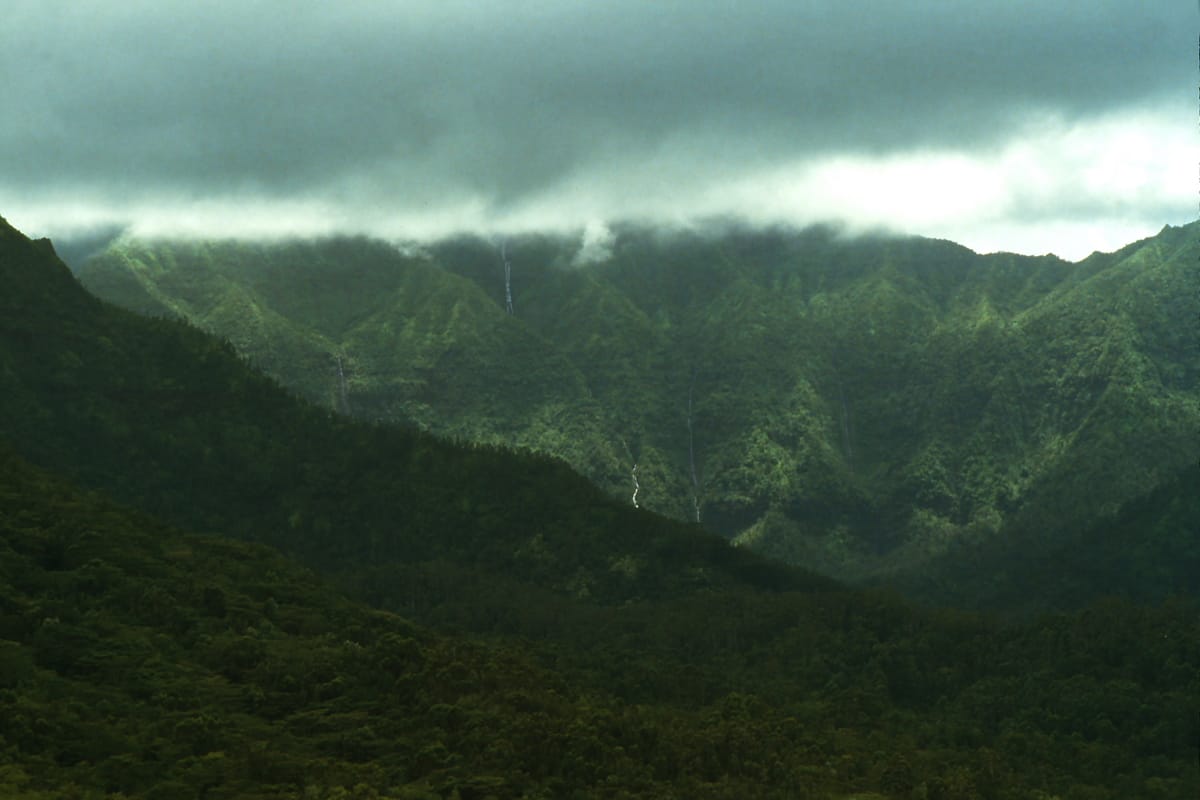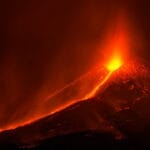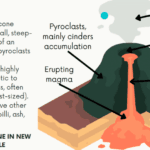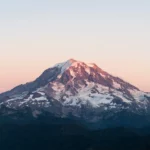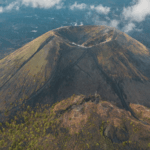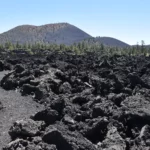Get ready for an epic hike! We’ll tackle Mount Waialeale, also known as the “Weeping Wall of Kauai.” This huge, ancient volcano is covered in cliffs and waterfalls, thanks to the crazy amount of rain it gets (over 450 inches a year!). As we climb, we’ll soak up the incredible views and learn about the unique ecosystem that makes this mountain so special. By the time we reach the top, we’ll be blown away by the feeling of achievement and the breathtaking panorama.
Unveiling Earth’s Rainiest Realm: Your Guide to Outperforming the Competition
Deep in the heart of Kauai, there’s a mountain that seems to cry. They call it Mount Waialeale, a name meaning “overflowing water” in Hawaiian – and boy, does it live up to that name! Imagine a place where it pours almost every single day, racking up a mind-blowing average of over 373 inches of rain each year. This incredible downpour earns Mount Waialeale a spot among the rainiest places on the entire planet.
But don’t let all that rain scare you off! While the constant showers might make you think twice, they also create a landscape of breathtaking beauty. Picture this: you arrive at the base of the mountain and find yourself staring into the “Blue Hole,” a pool of water so clear and vibrant it looks like something out of a dream. This natural wonder gets its water from the countless waterfalls that cascade down the mountain’s sides, creating a stunning spectacle known as the “Weeping Wall.” It’s a sight that takes your breath away and reminds you of the raw power and artistry of nature.
Now, if you’re thinking about lacing up your hiking boots and braving the slopes of Mount Waialeale, be warned: This isn’t your average walk in the park. The trails can be pretty tough, often requiring hikers to have some serious skills and experience. And just like the weather on the mountain, the conditions on the trails can change in an instant, so being prepared and having a guide is absolutely essential.
What makes Mount Waialeale even more special is the role it plays in protecting Kauai’s incredible biodiversity. The mountain is the heart of the Alaka’i Wilderness Preserve, a lush and verdant haven teeming with life. This isn’t your typical forest, though. Think more like a giant, waterlogged sponge! The constant rain creates a unique environment where plants have adapted to thrive in the soggy, peaty soil. It’s a wonderland for scientists and nature enthusiasts, offering a glimpse into a world unlike anywhere else.
So, if you’re the adventurous type who doesn’t mind a little (or a lot of) rain, Mount Waialeale is calling your name. Just remember to pack your raincoat, your sense of adventure, and a healthy dose of respect for the awesome power of nature. It’s a journey you won’t soon forget!
Is Mount Waialeale REALLY the Wettest Spot on Earth? (We Investigate)
So, we’ve talked about some pretty soggy places, but the race for the wettest spot on Earth is a close one! Mount Waialeale in Kauai has been a top contender for a long time, and for good reason. This mountain is shaped like a cone, and it basically acts as a giant rain catcher. Think about it, all that warm, moist air from the ocean hits the mountain and has nowhere to go but up. As the air rises, it cools down, and all that moisture turns into rain. We’re talking over 450 inches – that’s like 37 feet of rain every year!
But wait, there’s a twist! Over in India, there’s a village called Mawsynram that’s giving Mount Waialeale a run for its money. Mawsynram actually holds the Guinness World Record for the highest average rainfall, with a jaw-dropping 467 inches per year! That’s even wetter than our friend in Kauai! And just to keep things interesting, another village in India called Cherrapunji used to hold that record before Mawsynram came along.
Now, you might be wondering why some places get so much more rain than others. Well, it’s a whole bunch of things working together. Being near a big body of water like an ocean is a big factor. Oceans provide a whole lot of moisture that eventually ends up in the air and, you guessed it, rain. Mountains also play a part because they force that moist air upwards, and as it cools, it dumps all that rain. Wind patterns are important too. They carry all that moist air from the ocean towards land, and depending on how the air circulates around the globe, some areas get more of that rain-carrying air than others.
All this rain might sound fun until you realize the challenges it brings. While all that water creates incredibly lush landscapes and unique ecosystems, it can also lead to problems. Imagine dealing with constant erosion, landslides, and the challenge of managing all that water! It’s a double-edged sword, that’s for sure.
The quest to find the absolute wettest spot on Earth is an ongoing adventure. Scientists are constantly learning more about how rainfall patterns work and are developing better ways to measure it. So, stay tuned because the competition for the title of “wettest” might have some surprises in store!
Kauai’s Mt. Waialeale: Exploring the Rainiest Place in Hawaii (and Maybe the World!)
So, you want to know where the most rain falls on Earth? Well, it’s a bit of a showdown between two places!
On one side, we’ve got Mount Waialeale in Kauai, Hawaii. Picture this: a massive mountain smack-dab in the Pacific Ocean, just begging for clouds to bump into it. And boy, do they ever! Mount Waialeale gets an insane amount of rain – like, an average of 450 inches every year. To put that in perspective, that’s taller than a three-story building! They even had a year, back in 1982, where it poured a record-breaking 666 inches!
But hold on, India wants a word! Mawsynram, a village nestled in the Khasi Hills, currently holds the Guinness World Record for the highest average rainfall. This place gets drenched with an incredible 467 inches of rain annually.
So, why all the wetness? Well, a few things are at play. First, there’s something called “orographic lift.” Imagine moist air cruising along and suddenly slamming into a mountain range. It has nowhere to go but up! As the air rises, it cools down and bam – rain! Both Mount Waialeale and Mawsynram benefit from this phenomenon.
Then there are the trade winds, these big wind patterns that blow consistently across the globe. They act as giant conveyor belts, carrying moisture from the ocean towards the land. And guess what? Both contenders are in prime locations to catch all that soggy air.
Now, you might think, “Hey, all that rain sounds pretty cool!” And in some ways, it is! These incredibly wet conditions create unique ecosystems, teeming with unusual plants and animals. But there’s a flip side too. All that water can lead to some serious erosion and, obviously, flooding. Imagine trying to build a house when it feels like the sky is constantly falling!
So, the debate over the absolute wettest spot on Earth might still be up for grabs. But one thing’s for sure: both Mount Waialeale and Mawsynram are incredibly soggy places that showcase the awesome power of nature.
Is Kauai the Wettest Place on Earth? Debunking the Myth (and Exploring the Reality)
So, we’ve talked about how much rain falls on Mount Waialeale. But does that make Kauai the wettest place on earth? It’s definitely a contender, with Mount Waialeale averaging a mind-boggling 450 inches of rain per year. Imagine that for a second – that’s over 37 feet of rain! To put it into perspective, that’s taller than most houses!
However, claiming the title of “wettest” is a bit tricky. You see, it all comes down to how we measure “wettest.” Is it the highest average rainfall, the most days with rain, or the sheer volume of water that falls from the sky?
Some argue that Mawsynram, a village in India, deserves the title, with records showing over 467 inches of rain annually. But hold on, there’s another contender! Cherrapunji, also in India, has seen a whopping 1,042 inches in a single year! Now that’s what you call a downpour!
People’s Statement:
“Mount Wai‘ale‘ale on the gorgeous island of Kaua‘i is often referred to as the wettest spot on earth… it’s more accurately ‘one of’ the wettest spots on earth.”
So, where does this leave Kauai and its remarkable Mount Waialeale? While it might not hold the undisputed title of “wettest,” it’s undoubtedly one of the rainiest places on our planet. And considering the lush rainforests and stunning waterfalls fueled by all that rain, we’re not complaining!
Are you an adventurers camper? If yes, hiking to the tallest peak in the Mazatzal Mountains, the Mazatzal Peak, is a must! The trail is challenging, but the views from the top are worth it. Meanwhile, for anyone who wants to explore a mountain with an extinct volcano crater, Mount Waiʻaleʻale is one of the wettest spots on Earth, with an average annual rainfall of over 450 inches.
